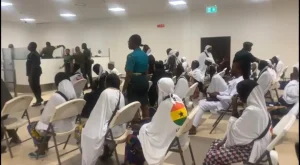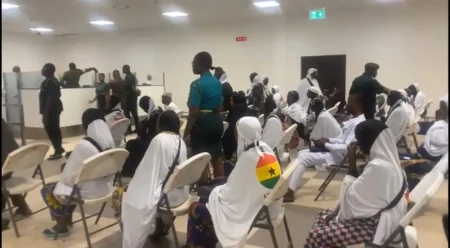This tragic incident underscores the persistent threat of cult violence in Nigeria, particularly in the Niger Delta region. The seemingly random nature of the attack highlights the vulnerability of ordinary citizens to these groups, even educated individuals like the two slain graduates on the cusp of commencing their national service. The fact that they were targeted simply for being in the wrong place at the wrong time amplifies the fear and insecurity that pervade communities grappling with cult activities. This incident serves as a stark reminder of the urgent need for comprehensive strategies to combat cultism and enhance security in the region.
The details of the attack are particularly gruesome, painting a picture of a brutal and premeditated assault. The cultists, arriving in a vehicle, seemingly identified their targets and immediately launched their attack, suggesting a possible preexisting animosity or a random act of violence meant to instill fear. The chanting of their alleged cult slogan, “aiye, aiye,” before the attack underscores the ritualistic and performative nature of their violence, designed to intimidate and terrorize. The relentless pursuit of one of the victims, even after he sought refuge in a nearby creek, demonstrates the callous disregard for human life that characterizes these groups.
The attempted intervention by a relative of one of the victims, the driver of the vehicle used by the assailants, adds another layer of complexity to the tragedy. His initial attempt to protect his relation highlights the conflicted loyalties that can arise within communities affected by cult activities. The fact that the attackers ultimately overpowered him and continued their assault underscores the immense power and influence these groups wield, often silencing even those who might otherwise intervene. This incident also raises questions about the driver’s involvement and whether he was coerced or complicit in the attack, aspects that will undoubtedly be scrutinized in the ongoing police investigation.
The response of the local vigilante group and the police offers a glimpse into the challenges of maintaining law and order in areas plagued by cult violence. The vigilante commander’s account of the incident reveals the group’s efforts to provide immediate assistance, including administering first aid and contacting the police. However, despite these efforts, one of the victims succumbed to his injuries, highlighting the limitations of local security measures in the face of such brutal attacks. The subsequent police investigation, including the arrest of the driver and the pursuit of other suspects, represents a crucial step toward bringing the perpetrators to justice.
The confirmation of the incident by the police spokesman and the announcement of an ongoing investigation by the State Criminal Investigative Department offer a measure of reassurance that the authorities are taking the matter seriously. The arrest of the driver is a significant development, potentially providing crucial information about the identities and motivations of the other attackers. However, the effectiveness of the investigation will ultimately be judged by its ability to apprehend all those responsible and hold them accountable for their actions. This case, like many others involving cult-related violence, underscores the importance of thorough investigations and successful prosecutions to deter future acts of violence.
The broader implications of this incident extend beyond the immediate tragedy. The killing of two young graduates on the verge of contributing to their communities and the nation represents a profound loss. Their deaths serve as a stark reminder of the devastating impact of cult violence on individuals, families, and society as a whole. This tragedy highlights the urgent need for a multi-pronged approach to address the root causes of cultism, including poverty, unemployment, and a lack of educational opportunities. Furthermore, it underscores the importance of strengthening security measures, enhancing community policing, and promoting peace-building initiatives to create a safer environment for all citizens. Ultimately, preventing such tragedies requires a collective effort from government, law enforcement agencies, community leaders, and individuals to dismantle these violent groups and foster a culture of peace and respect for human life.














